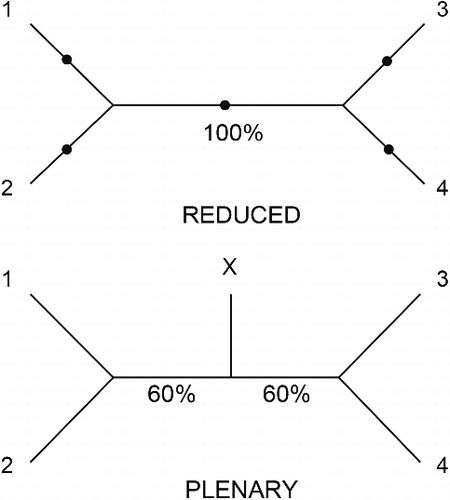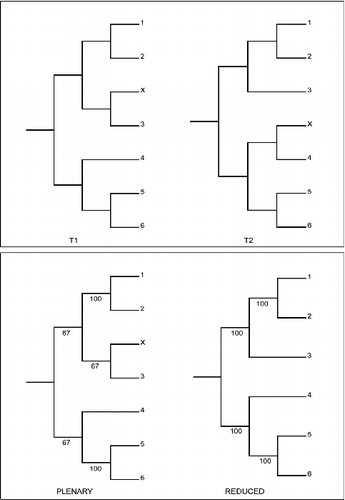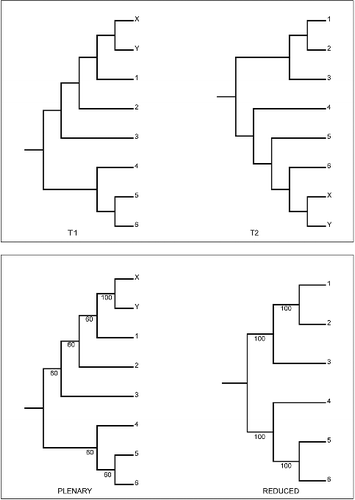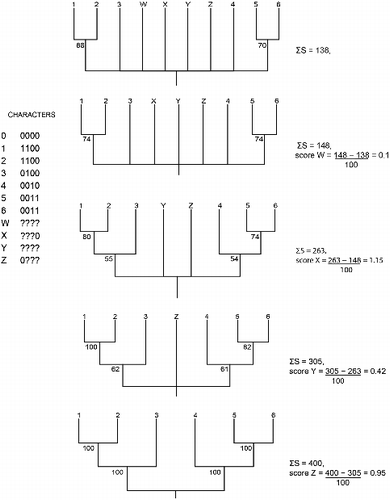Figures & data
Fig. 1. First example of the behaviour of RNR: ability to detect rogues. The upper quartet tree is a maximally supported (100%) unrooted tree for the quartet 1–4 of leaves. Dots indicate the five possible points at which a rogue (X) with no relevant data can be added to give a binary tree. The lower tree is the majority rule consensus of the five binary trees including X. Note that the quartet tree is also a reduced consensus of the five binary trees including X. ΣS is higher (120) for the plenary than for the reduced (100) consensus and thus RNR does not identify X as a rogue.

Fig. 2. Second example of the behaviour of RNR: sensitivity. The alternative tree topologies (T1 & T2) differ only in the position of a rogue (X). The lower panel shows the plenary and a reduced majority-rule consensus for a set of 67 copies of T1 and 33 copies of T2. ΣS is higher (401) for the plenary than for the reduced (400) consensus and thus RNR does not identify X as a rogue. If instead there are 66 copies of T1 and 34 of T2 then ΣS is lower (398) for the plenary consensus and RNR identifies X as a rogue.

Fig. 3. Third example of the behaviour of RNR: dropset size. The alternative tree topologies (T1 & T2) differing only in the position of a rogue cherry comprising leaves X & Y. The lower panel shows the plenary and a reduced majority-rule consensus for a set of 60 copies of T1 and 40 copies of T2. ΣS is identical (400) for the plenary and the reduced consensus and thus RNR does not identify X and Y as rogue. If instead there are 59 copies of T1 and 41 of T2 then ΣS is lower (395) for the plenary consensus and RNR identifies X and Y as rogue if the dropset size is higher than the default. At the default setting X and Y are never identified as rogues.

Fig. 4. Fourth example of the behaviour of RNR: scores. A data matrix containing four rogue taxa (W-Z) used to create 100 binary bootstrap trees and the corresponding plenary and four reduced majority rule consensus trees for successive deletions of W-Z showing changes in ΣS and calculation of associated RNR scores. The outgroup (0) is not shown in the tree.

